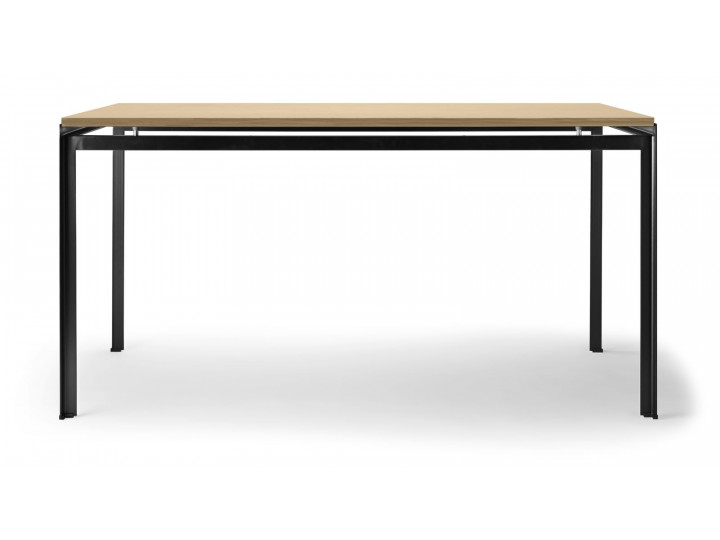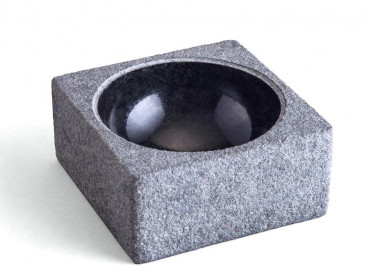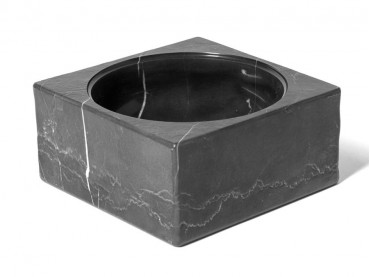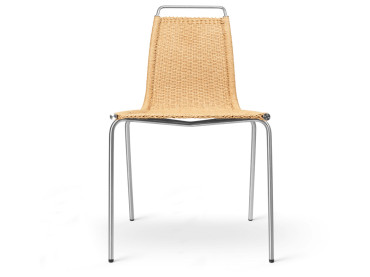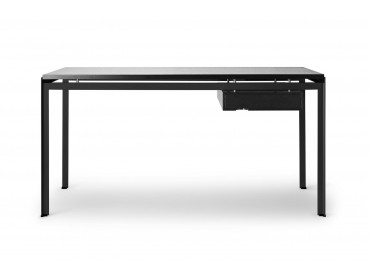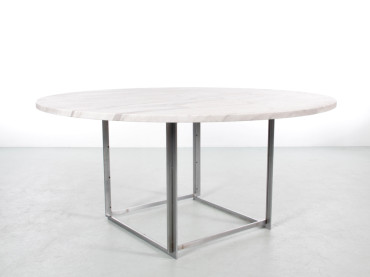Mid-Century modern scandinavian desk model PK52 "Professor desk" by Poul Kjærholm.
-
Poul Kjearholm
-
Carl Hansen & Søn
- CH087 On demand. Delivery time 8-10 weeks
Mid-Century modern scandinavian desk model PK52 "Professor desk" by Poul Kjærholm. *Required step
In order to help you to choose, and to receive samples, do not hesitate to contact us by email: contact@galerie-mobler.com or by phone: 01 43 33 20 12
Poul Kjærholm designed the PK52 Professor Desk when the Academy needed a number of tables for lecturers and students. Drawing on his cabinetmaking experience, Kjærholm developed a new table structure that showcased his mastery of steel and wood. Metal ferrules separate the steel and wood to lend this desk a dynamic, light look. Furthermore, the tabletop is reversible, allowing the user to work on both sides – or use one side for work and the other for meals or entertaining. The PK52 Professor Desk is also available in a more compact size as the PK52A Student Desk. An optional drawer in both desks offers elegant storage space, and both can easily double as dining tables. Legs in black or gray lacquered steel.
Without the module with drawer, the top is reversible: black on one side and gray on the other. With a drawer the top is mounted with black side visible. The edges are in wood painted black.
| Year | 1955 |
| Dimensions | H : 72 cm. L : 186,5 cm. D : 85 cm. |
| Material | oak . Base: black steel. |
| Style | Classique Neuf |
| Origin | Denmark. |
| Fournisseur | Carl Hansen & Søn |
Poul Kjearholm
Denmark (1929-1980)
Architect Poul Kjærholm finished his training as a cabinetmaker in 1949 and continued his education at the Danish School of Arts and Crafts’ Furniture School, graduating in 1952. At the same time he sat in on lectures at The Royal Danish Academy of Fine Arts’ School of Architecture. He first taught at The Danish School of Arts and Crafts and then at The Royal Danish Academy of Fine Arts’ School of Architecture, where he took over Ole
Wanscher’s professorate in 1976. Poul Kjærholm was inspired by the international functionalism and its minimalist steel tube furniture, but he did not imitate it. He elaborated on it and developed it until he had created independent furniture in a personal style. The starting point was the particular qualities of the steel; the aim was that the shape of the object should reflect the material it was made from.
This started with Kjærholm’s final examination project from The Danish School of Arts and Crafts, the Flagline chair (PK25), where each side consists of a piece of sliced spring steel, which has been bent to form both legs and armrests. A few years later he had re-designed PK25 and created a new recliner (PK22) consisting of a few steel components, which had been joined with Allen screws (RP00219). This made it easier to create clear and readable constructions, where even the joints with Allen screws were used decoratively. The steel was matt polished to avoid reflections from the light. PK22 was the first chair in a series of steel tube furniture based on the same construction scheme. A good example is the classically beautiful armchair PK11, the serene Tulip chair PK9 (RP00221) and the elegant lounger PK24 (RP00224). It was not just the furniture that had to be beautiful, the individual parts had to be so too. Kjærholm demonstrated this by joining several identical construction elements together into large sculptures at his exhibitions. Kjærholm also experimented with wood furniture and created the pivotal shell chair of moulded veneer PK0 (RP01481) and the armchair PK15 made from steambent wood.
With his sculptural steel furniture, Poul Kjærholm created his own style of furniture characterized by simple and serene constructions, which also functioned on the purely aesthetic level. One might say that Poul Kjærholm was a pioneer of steel furniture in the same way as Hans J. Wegner was a pioneer of wooden furniture.

